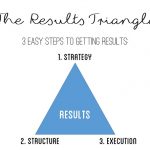
“It’s not a matter of knowing what to do…it is the execution of how.” This is a quote from Quint Studer, founder of Studer Group and Studer Education, in a September article in Becker’s Hospital Review. Studer is not alone in his focus on execution. Brandon Dixon of the Pensacola Blue Wahoos, the Double A affiliate of the Cincinnati Reds, has seen his per game batting average steadily increase over the last 10 games, from .263 to .317, moving to .471 overall. Recent articles headline his bat coming alive with titles like, “Dixon goes yard twice again for Wahoos: Reds infielder plates five runs in second straight two-homer outing” and Dixon’s reflective practice to higher performance:
“You can just kind of tell [when things are good], by how your outs are, if you’re making hard outs, drawing walks, seeing the ball well… It’s not necessarily just based on hits or stuff like that. The entire scope of [each at bat] lets you know you’re feeling pretty good and trying to keep it rolling.”
Indeed, Dixon at bat is “feeling pretty good” for the Blue Wahoos and moves manager Pat Kelly to be committed to getting the high-performing slugger into the daily lineup. Of course, for Kelly and the first place Wahoos it’s more than getting high performing players on the field if they want to continue to stay at the top of the league. For educational leaders, it’s more than getting high performing employees “on the bus” and “in the right seat” on the bus.
Once we recruit and retain high performing employees, the challenge for us as educational leaders is to align our actions and our district practices to five practices common among high-performing organizations, and then execute them. Five practices common among one industry’s high-performing organizations as identified by Studer are:
1. Executive and senior leadership commitment.
2. Leadership evaluation and accountability.
3. Leadership institutes and training.
4. Communication and employee forums.
5. Know this was the right thing to do.
As educational leaders we must think about and describe how our district or school embodies these five practices. In doing so, we:
- identify how each practice is executed,
- describe “what right looks like” for each practice,
- identify a metric or measurement for each practice,
- identify individual responsible, and
- reflect on how well our organization executes each practice.
Why? When we do these things, we show our colleagues that we as leaders care about their well-being. We must connect with the hearts and minds of those we lead. In turn, they allow us to be proactive about solving problems in an execution (evidence-based leadership) framework. Additionally, it maximizes performance through continuous improvement. When we do these things, we champion great places to work, learn, and achieve.

